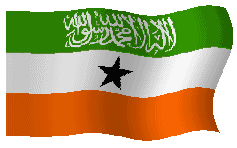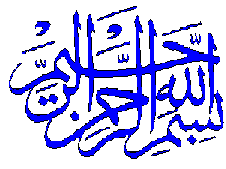

Mareegta Far-Shaxan


 |
 |
Mareegta Far-Shaxan |
 |
 |
| ha moogaan mareegta u ban baxday raadraaca taariikhda, dhaqanka iyo hidaha |
| Tifatirayaasha Farshaxan way ka madax banaan yihiin fikradaha gaarka ah ee ku sugan halkan |
|
Farshaxan Bahda Farshaxan EMAIL ..
of
the Somaliland Protectorate 1944 - 1950 (C.
D. & W. Scheme D.484) by
John A. Hunt, M.A., F.R.G.S., F.G.S. Chapter III: Time Dimension
Table Showing First Days of
Somali/Arabic Lunar Months in Gregorian
Dates, 1944-52 (In Kabisha
years
30)
Kabisha Days
355 Common Days 354
Common Days 354
Kabisha Days
355 Common Days 354
Kabisha Days
355 Common Days 354
Common Days 354
Kabisha Days
355
58. Table 2.
Somali Seasonal Calendar, 1944-52
[This Table is shown only for the
year 1951 for illustrative purposes in
this online version] ==========
Time in the
Somaliland Protectorate Kirk, in his
Grammar of the Somali language, gives a
good résumé of this in his Appendix I.
The following note shows some variations
and additions:
The 24 hours
are divided
into four parts: (a) Gelin hore
(b) Gelin dambe before noon after noon
(a) Gelin hore
(b) Gelin dambe before midnight
after midnight
"Malin" and
"Haben" together are two "Anamal" and
make up one complete 24 hours. The times of
day are mostly
connected with Moslem prayer, grazing,
milking, ect. They do not fit exactly
with the 24-hour clock, because the day
starts with sunrise, which varies in the
course of the year from about 5.30 to
6.30 hours. They may however be shown
approximately as follows, though always
with some degree of uncertainty:
In Mogadishu
the 12 hours start at 6.00 and 18.00
hours, the Arabic clock being used. The
week is more or
less as in Arabic: The month is the lunar
month of 29 to 30 days as in the Arabic
Calendar (and as will be seen below
identical or similar to the Calendar on
which Easter is reckoned in the Church of
England Prayer Book). Table 1 (above)
shows the Somali lunar months (with
Arabic names following) compared with the
Gregorian solar calendar from October
1944 to August 1952. The month is also divided into the two
halves: The year is the
twelve Moslem months as shown above
(Table 1). It is, however, divided in
various other ways according to seasons
of rain, temperature and monsoon winds.
Roughly
speaking, the Gu
proper begins with the
dropping of the N.E. Monsoon and the
beginning of the S.W. Monsoon at
approximately April 1st and lasts six
months until the end of September. The
Jihil
six months begins when the S.W. Monsoon
drops and the N.E. Monsoon begins on
about October 1st, lasting until the end
of the following March. Accepting this
division of the year into two, the Jilal
would include all the Dhair, Wajina, Hais and Todob rains.
The Gu would start in April with Daido and
include Sermawedo
, 'Aul
,
Sagallo, and Karan. The Gu would
thus include both the clam windless Kalil periods
of April and September. In fact the
Somali Seasonal Calendar for the
Somaliland Protectorate is very much more
complicated (See Table 2 above). It is
based on a combination of: The following
information from which the Calendar of
Table 2 is compiled, was supplied by Mr.
Amir Dualeh Elmi, of the Habr Toljaala
tribe (rer Musa Yusuf). He is also
an expert on weather lore, much of which
is calculated by him from the occultation
of the star Spica (in Somali Dirir) or
near-occultation by the moon, and
observation of meteorological data of
these times. The discussion of Dirirs,
however confuses the issue, as it does
not in fact affect the Calendar though
many Somalis believe it to do so. Dirirs
are really concerned with meteorological
forecasting (and perhaps astrology).
The date of
Dabshid
(approximately August 4th) is
handed down from father to son and
calculated by adding the necessary number
of days (about 11) to the Lunar Calendar
date each year. The Moslem lunar date for
Dabshid in A.H. 1369 (in 1950) was 19th Sonfur (Shawal). After this
constant solar date (August 4th) the first 40 days are Dhairta Halalod
(i.e. to the end of the S.W. Monsoon),
the next 20 are
Dhair Habis (usually with
little wind and little thunder and
lightning), and the next 30 (i.e. the
real marked beginning of the N.E. Monsoon
and usually important widespread rains)
are Dhairta
Dirirod. The 90 days from August 4th
to November 2nd are the Dhair quarter
proper. The next
92 days, together with the Dhair quarter,
make up the six months of the Jilal half-
year (August 5th to February 3
rd). The 182 days
preceding Dabshid (approximately February
4th to August 3rd)
are the Gu half-year. An additional
season preceding Dabshid is the Karan, which
is 20 days before and 20 days after
Dabshid (i.e. July 15th to
August 24th). The first half
of this is also called Samalaho, and the
second half is also part of the Dhair
Halalod. Thus it is
seen that the simple division of the year
into the six months Jilal followed by six
months Gu, and the dates of the Karan and
the three Dhairs, are constant Gregorian
Solar Calendar dates. The detail of
the rest of the year is unfortunately
based on the Mohammedan Lunar Calendar.
Corrections are made only every third
Moslem year, so that these seasons vary
in a cycle of three years by 22 days (?)
on the Gregorian Solar Calendar (and
therefore in relation to Dabshid and the
Dhair). When the
Dhair Dirirod finishes (on November 2nd), the balance of that Moslem
month is called
Wajina, which may be any
number of days from 1 to 30. The next Moslem
month after Wajina is Dhairta Dambesama, and the
next after that is Hais. Then there is another break. If Hais
finished before the end of the 182 (some
say 177) days of the Jilal half-year,
there is a gap of anything up to two
months (called
Mehrjan) during which any rain
which falls is also called Hais rain.
In the seventh
month after Dabshid the Gu starts. This,
in A.H. 1368-70 (i.e. November 3rd
, 1948, to September
3rd, 1951, is the Somali month
Rejal Dambe
(Arabic Jomada II), and so on,
and the Somali season of this seventh
Moslem month after Dabshid is called
Todob
(or Lehhkor
). The
succeeding Moslem lunar months are called
Daido,
Sermawedo
, 'Aul
and
Sagallo (or Sakaro). From Todob
to Sagallo, both inclusive, is thus seen
to be five Moslem months out of the six
months which, ending on August 4th
, make up the Gu half-year. Part of
the missing six months may precede the
Todob (during February if Todob is in
March), and is then an extension of Hais.
Part may come between the Sagallo month
and Dabshid day, being thus included in
the first half of Karan (Samalaho). The Following
notes have been made on the variable
Somali rain seasons, after the
comparative calendar (Table 2 above) had
been drawn up: Wajina
starts
constantly on November 3rd but
varies in length from 1 to 30 days,
completing the lunar month in which
November 3rd falls.
Dhair Dambesama is a Moslem
lunar month in November to December. The
variation in data of its beginning is 25
days in the period 1944-51 shown in the
Calendar.
Hais
is a Moslem
month in December to January varying in
starting date up to 25 days. The
Gregorian Calendar's New Year's day is
always in Hais. Mehrjan Hais
is one to two
months in January to February, to
complete the six months of the Jilal
half-year. Any rain filling in this
Mehrjan is included in Hais.
Todob (the month of
Dirir Adi Asseye
) is a lunar month in February
to March, varying in starting date up to
25 days.
Daido
is a lunar
month in March or April, varying in
starting up to 25 days. (The Christian
east Sunday is always the Sunday after
the full moon of Daido.)
Sermawedo is a lunar
month in April to May, varying up to 25
days. Most stock-breeders try to mate
sheep so that lambs will be born in
Sermawedo. The 25 days variation
(according to the Solar Calendar) in the
best date for the birth of the lambs, is
reminiscent of the custom of planting
potatoes about Good Friday in parts of
Britain.
Possibly there is a lesson in
meteorological forecasting to be learned
from the ancient lore of these
agriculturalists and stock-breeders.
'Aul
is a lunar
month in May to June varying up to 25
days.
Sagallo
(or Sakaro) is
a lunar month in June to July varying up
to 25 days. Mehrjan
is the balance
of days, if any, between the end of
Sagallo and the beginning of the Karan
(Samalaho) on July 15th. From July
25th the Somali rain seasons
are constant by the Solar Calendar, till
the end of the Dhair on November 2nd
. Civic Webs Virtual Library
|